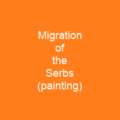Discovering the Rich History of Serbia
Imagine a land where history whispers through every stone and culture dances in every melody—welcome to Serbia. This Balkan gem is not just a country; it’s a tapestry woven with threads from ancient times, medieval kingdoms, and modern-day aspirations. Let’s dive into the fascinating journey of this landlocked nation nestled between Hungary, Romania, Bulgaria, North Macedonia, Croatia, Bosnia and Herzegovina, and Montenegro.
The Ancient Roots
Believe it or not, human habitation in Serbia dates back to the Paleolithic Age. Imagine our ancestors wandering through the same landscapes that now buzz with modern life. The discovery of a hominid jaw fragment in Sićevo suggests that humans roamed these lands as far back as 525,000-397,000 years ago. That’s an incredible timeline!
The Neolithic and Iron Age
Fast forward to approximately 6,500 BC, the Starčevo and Vinča cultures thrived in what is now Belgrade. These early civilizations left behind a rich legacy of pottery and artifacts that tell stories of their daily lives. The Neolithic era was a time when people transitioned from nomadic lifestyles to settled communities, laying the groundwork for future developments.
The Medieval Kingdoms and Empires
As we move through history, Serbia’s story unfolds like a grand saga. Medieval kingdoms and empires rose and fell in this land. The Serbian state experienced its golden age under King Stefan Dušan, who ruled from 1331 to 1355. His reign saw the elevation of Serbia to an empire, with territories stretching far beyond modern-day borders.
The Ottoman and Habsburg Rule
However, the rise came with a fall. The Ottoman Empire’s conquest in the 16th century marked a dark chapter for Serbia. Serbs were subjected to heavy taxes, enserfment, and even Islamization. Yet, resistance never truly died out; it simmered beneath the surface until the Habsburgs took control in the late 17th century.
The Path to Independence
After centuries of foreign rule, Serbia’s path to independence was paved with blood and sacrifice. The Serbian Revolution from 1804 to 1815 saw Serbs fighting for their freedom. Despite setbacks, the revolutionaries eventually achieved de facto independence in 1867, setting the stage for a modern nation.
The Twentieth Century and Beyond
Entering the 20th century, Serbia faced new challenges. The First World War saw Serbia’s army fighting bravely but ultimately succumbing to Austro-Hungarian forces. However, the war also brought about a significant shift in politics with the rise of Slobodan Milošević in 1989.
The Yugoslav Wars that followed were devastating. Despite international interventions and peace agreements, Serbia’s path to stability has been fraught with obstacles. Today, as Serbia applies for EU membership, it faces both opportunities and challenges in its quest for a brighter future.
A Land of Diversity and Opportunity
Serbia is not just about history; it’s also a land rich in natural beauty, cultural heritage, and economic potential. With diverse ecosystems, fertile lands, and a burgeoning tech industry, Serbia offers a unique blend of tradition and modernity.
The Economy and Industry
Today, Serbia is an upper-middle-income economy with a GDP per capita of $81.87 billion (2024). Its industries range from automotive to pharmaceuticals, with significant contributions from agriculture and tourism. The country’s strategic location makes it a key player in regional trade.
Culture and Heritage
From the gusle music of the highlands to the intricate pottery of Kovačica, Serbian culture is a vibrant mosaic. With UNESCO World Heritage sites like Studenica Monastery and the ancient city of Sirmium, Serbia invites visitors to explore its rich history.
The Future Awaits
As Serbia continues on its journey towards EU membership, it faces both challenges and opportunities. The country’s young population, coupled with a growing tech sector, positions it well for future growth. With the upcoming Expo 2027 and plans to develop Europe’s largest lithium mine, Serbia is poised to make significant strides.
So, whether you’re exploring ancient ruins or modern cities, Serbia offers a unique blend of history, culture, and potential. It’s a land where every step reveals new stories waiting to be told. Welcome to Serbia—where the past meets the future.

You want to know more about Serbia?
This page is based on the article Serbia published in Wikipedia (retrieved on February 2, 2025) and was automatically summarized using artificial intelligence.







